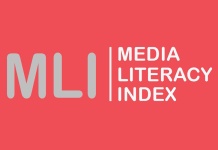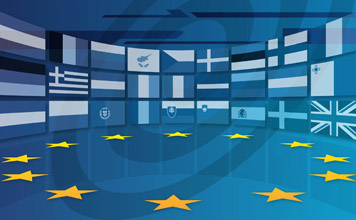Finland (1st), Norway (2nd), Denmark (3rd) and Estonia(4th), followed by Sweden (5th) and Ireland (6th), with nearly identical scores, are at the top of the ranking of the Media Literacy Index 2022. As in previous years, Finland remains No1 among the 41 European countries included in the index. These countries have the highest potential to withstand the negative impact of fake news and misinformation due to the quality of education, free media and high trust among people.
The countries in the bottom of the ranking are North Macedonia (35th), Bosnia and Herzegovina (34th), Albania (33rd), Montenegro (32nd) and Turkey (31st). These countries have low potential to deal with the effects of fake news and misinformation mainly due to underperformance in media freedom and education.
The Media Literacy Index is produced within the European Policies Initiative (EuPI) of the Open Society Institute – Sofia. The index assesses the resilience potential to fake news in 41 European countries, using indicators for media freedom, education and trust in people. As the indicators have different importance, they are assigned different weight in the model. The media freedom indicators have the highest weight (Freedom House and Reporters without Borders) along with the education indicators (PISA) with reading literacy having the highest share among them. The e-participation indicator (UN) and trust in people (Eurostat) have smaller weight relative to the other indicators. The first index was published in 2017 with editions in 2018, 2019, 2021 with 35 countries. In 2022 several more countries were added, making the number to 41 countries.
The index cluster analysis shows certain geographic patterns as the best performing counties are located in clusters in Northwestern Europe and the worst performing countries are located in the Southeastern Europe and the South Caucasus. The index shows there is a concentration of countries in the Southeast and East of Europe, which are potentially more vulnerable to fake news as they are lacking in several aspects monitored by the Media Literacy Index – quality of education, media freedom, low interpersonal trust or combination of problems in these areas.
“It is worrying that the societies, which are most vulnerable to the impact of fake news are at the same time the least concerned about the spreading and the impact of disinformation” said Marin Lessenski, author of the report. He added that when the results of the index are compared to other similar studies it is evident that the countries in Eastern Europe are those, in which there is a high level of vulnerability to fake news but at the same time low levels of concern among the citizens from the dissimination of such news. “This increases the risks, related to disinformation in such coutnries, especially in the context of the war in Ukraine, as part of the public does not realise or just ignores its vulnerability” added Lessenski.
This edition of the index comes at time when the Covid-19 pandemic brought with it an “infodemic” and now “infowars” have been active alongside an actual war in Ukraine, both turbo-charging disinformation and the threats emanating from it.
As far as the approaches in dealing with disinformation, the Media Literacy Index reports have been advocating for “education before regulation”. But as recent experience show, education is the necessary but long road. Regulation, including of social media and bans proved necessary, while safeguarding rights and free speech to the extent possible. Otherwise, the “paradox of tolerance” comes forward, when the rules of liberal democracy are being used to undermine it.
The Media Literacy Index was first published in 2017 and included 35 countries, while the 2022 edition has added several more countries, bringing the total to 41 countries in Europe included in the assessment. In addition, this year, for the first time, the index evaluates 6 more countries that are outside of Europe and that are included in a special expanded ranking. Of the non-European countries assessed, the best performers are Canada and Australia, which fall into the first cluster and have similar characteristics to countries such as Sweden and the Netherlands. The United States, Japan and South Korea fall into a second cluster of well-performing countries and are in the company of European countries such as France and Spain. Israel falls into a third cluster in the company of countries such as Hungary, Italy and Slovakia.
The full text of the report of the How It Started, How It is Going: Media Literacy Index 2022
Contact:
Marin Lessenski
Program Director, European Policies, OSI-Sofia
mlessenski@osi.bg















